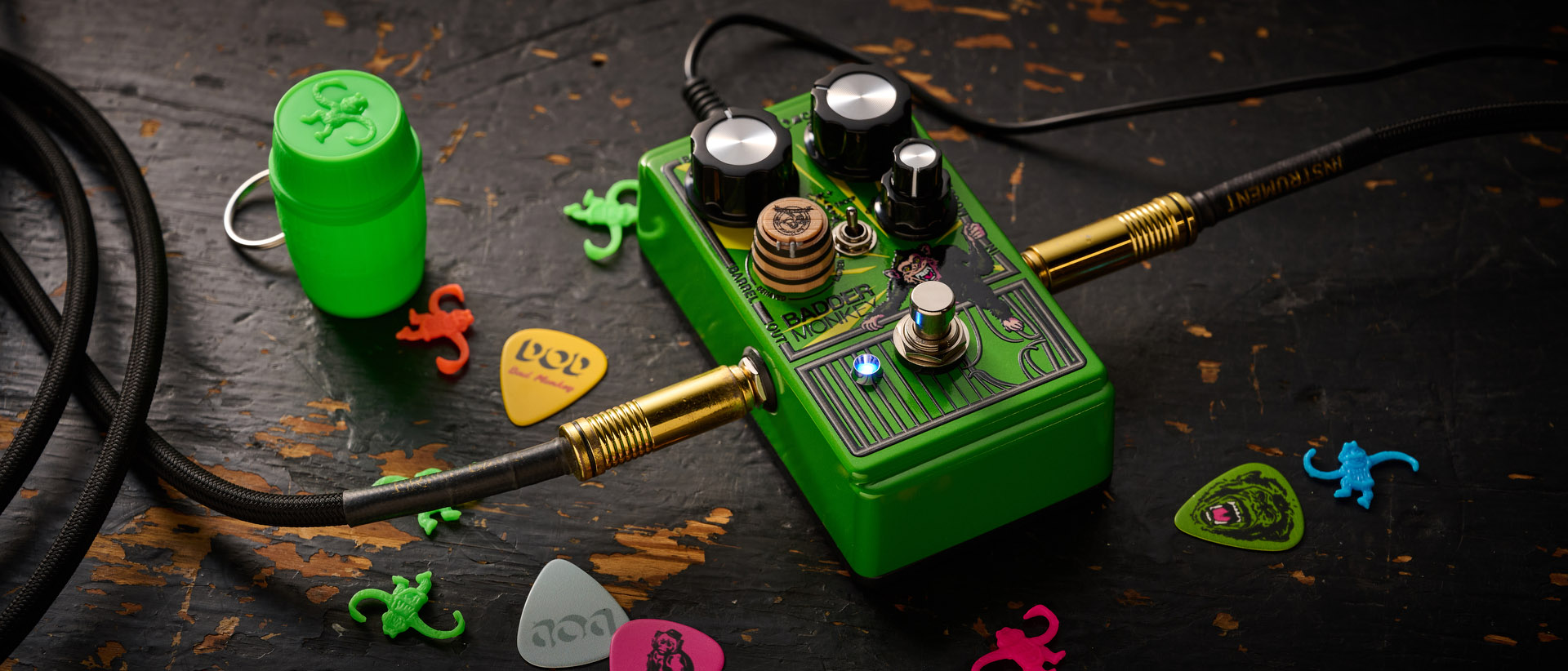Best 7-string guitars 2025: budget-spanning picks for djent to nu-metal
Thicken up your low end with the very best 7-string guitars from Ibanez, Jackson, PRS and more
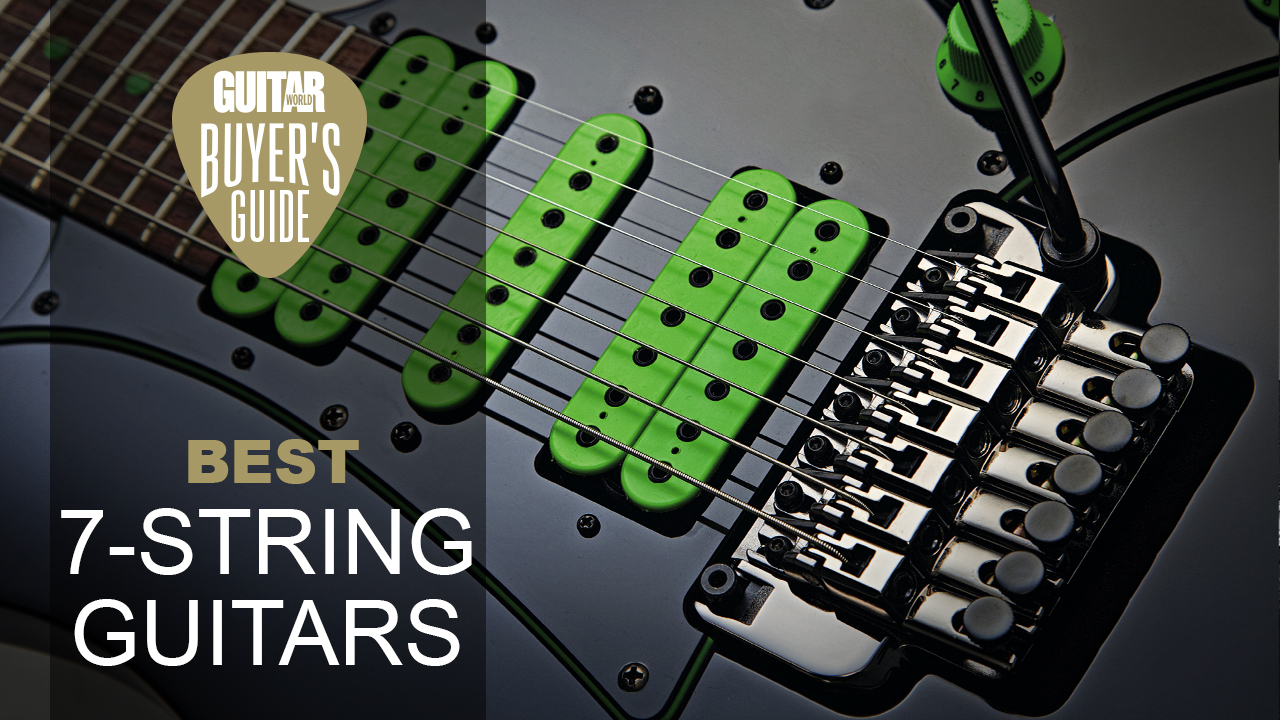
If you’re delving into the depths of heavy metal and its many sub genres, one way to help deliver powerful, crushing tones is to arm yourself with one of the best 7-string guitars. An additional string gives you easy access to lower tunings for a massive impact when riffing and chugging away, whilst retaining a tight and clear bottom end.
That said, the best 7-string guitars aren’t purely for metal players. Having an extra string lets you play completely new chord inversions, so can make for some really interesting guitar parts. Using this in the recording process can help thicken up your guitar sound, regardless of genre.
7-strings are great for ambient music too – stick one through a clean amp, dial up the reverb and get lost in tones previously impossible to achieve. If you’re playing in a band without a bass player, then your extra low string can help take care of the lower frequencies, so your sound is fuller.
As music evolves, new guitars are produced to keep up. There are now more options than ever, so we’ve put together our pick of the best 7-string guitars out there, from brands including Ibanez, Jackson, LTD and more.
Best 7-string guitars: Guitar World's choice
The PRS SE Mark Holcomb SVN offers players a really well-made 7-string guitar, for a reasonable price. It’s fitted with a pair of high-output Seymour Duncan Alpha and Omega pickups capable of seriously heavy tones, and the two finishes look incredible.
A more recent player in the 7-string game is the new Jackson Soloist SL7 Josh Smith signature model. Available in a very striking aquamarine finish with matching headstock, it has been designed for tight and focused detuned chugging, though it’s actually a very well-rounded guitar, largely thanks to his unique signature pickup set.
Best 7-string guitars: Product guide
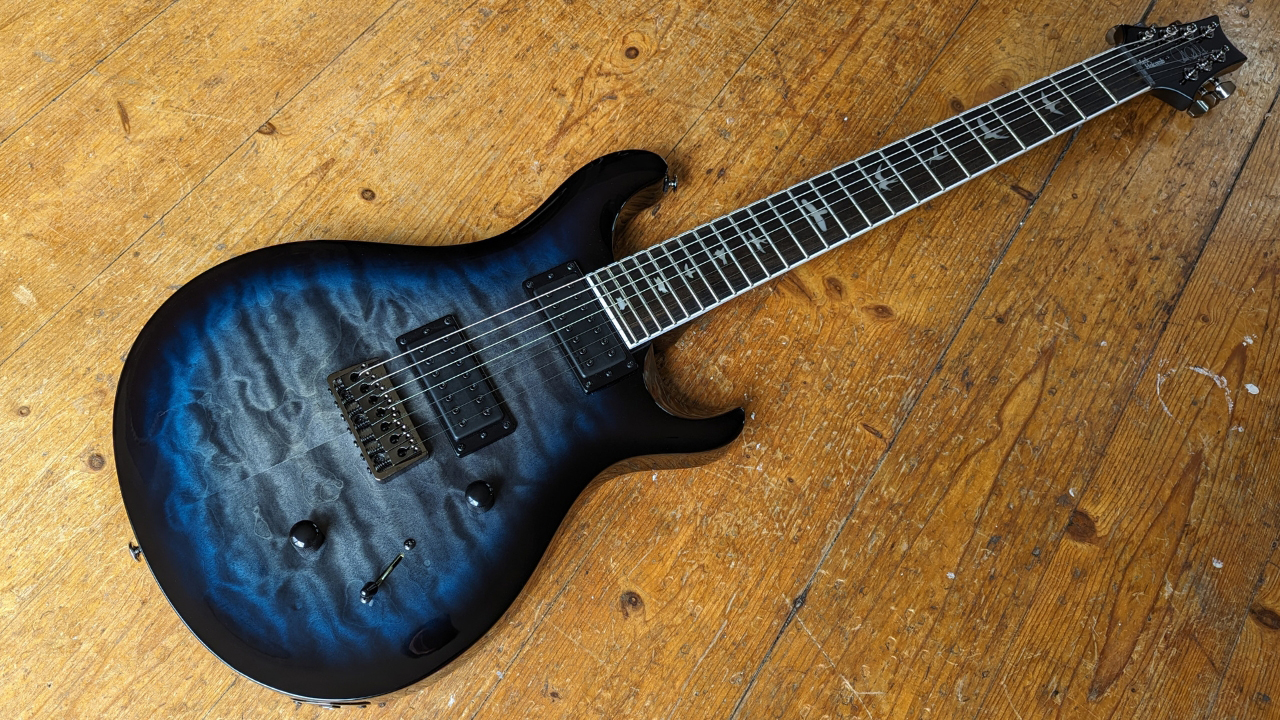
Specifications
Reasons to buy
Reasons to avoid
Despite PRS Guitars dipping its quilted-maple toe into the 7-string market circa 2013 with a super-sized SE Custom model, it was never going to be the company’s bread and butter. Every now and then, however, there comes along a guitar such as this, for a guitarist such as Mark Holcomb, and then it makes perfect sense.
We love this because of the refinement. Holcomb plays metal, and this signature PRS most capably supports this enterprise, and yet it is all curves and chamfering, with no sharp edges that call out ostentatiously to the black T-shirt dollar.
There is a wealth of tone to be had here, with Holcomb’s smart pairing of Seymour Duncan’s passive Scourge and Scarlet humbuckers in the neck and bridge positions offering heaps of grunt, and a coil-tap on hand for some single coil sparkle. Excellent build, awesome tones, flawless finish… Another fine PRS. Hey, they should do this sort of thing more often.
Read our full PRS SE Mark Holcomb SVN review
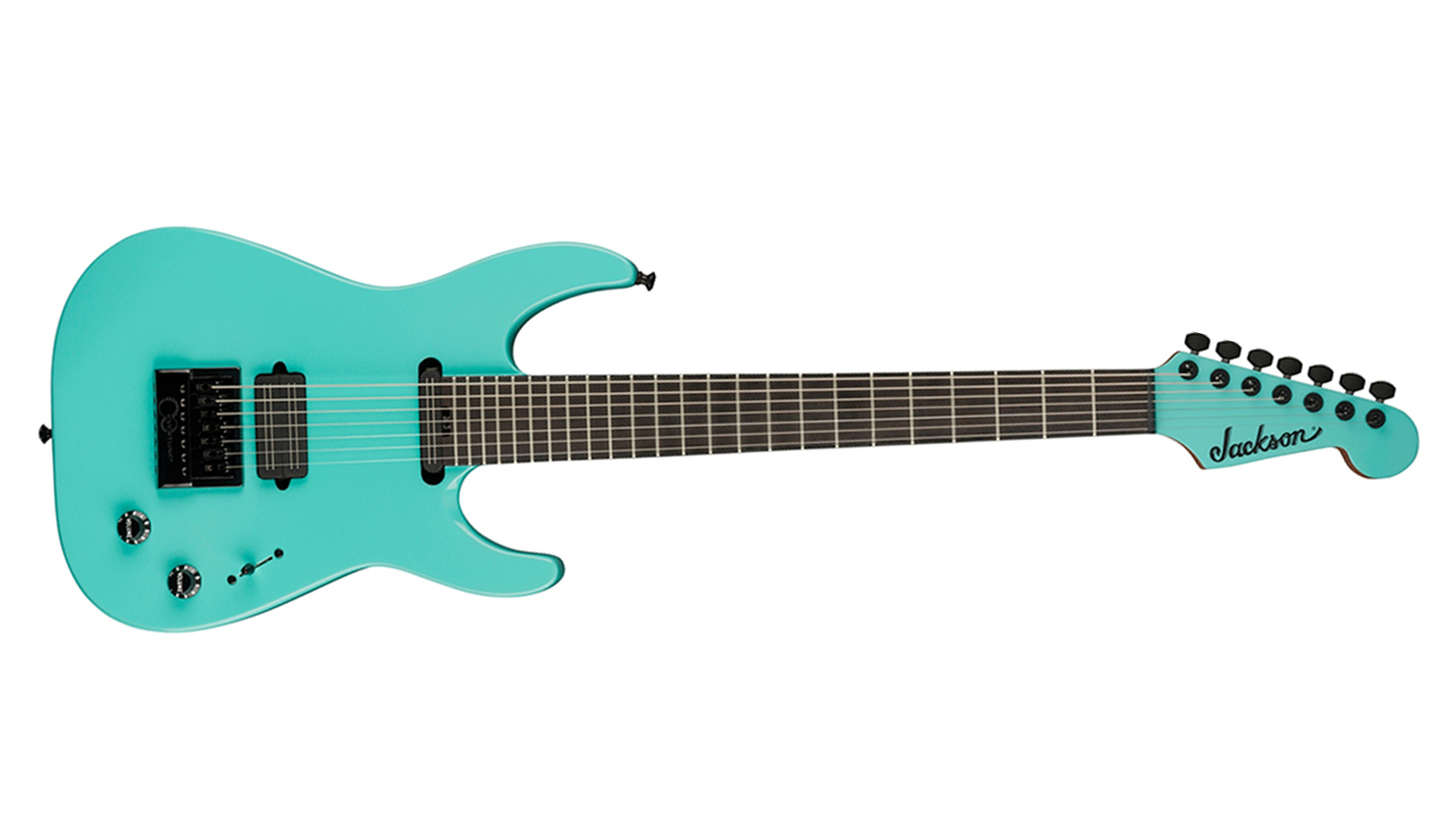
2. Jackson Pro Series Signature Josh Smith Soloist SL7 ET
Our expert review:
Specifications
Reasons to buy
Reasons to avoid
This is a really high-spec guitar that’s perfect for crushing metal tones. It’s the signature model of Northlane axeman, Josh Smith, who’s known for huge sounding down-tuned riffs. Fitted with his own signature pickups – the Bare Knuckle Impulse set, consisting of a bridge humbucker and a single coil in the neck position, these have been finely tuned to excel at handling low tunings. The bridge pickup is bright and focussed and the neck is smooth and clear – great for leads. Of course, these sound great through tons of gain, but they’re also very good at handling more subtle tones, like cleans and mid-gain sounds.
The 27” scale keeps everything super tight and means that you can go even lower than B, without it sounding too muddy. The Evertune bridge keeps your tuning and intonation absolutely on point and we also love the matching painted Strat-style headstock. It’s certainly not cheap, but you do get an awful lot for your money here, making this one of the best 7-string guitars currently on offer and one of the best Jackson guitars available today.
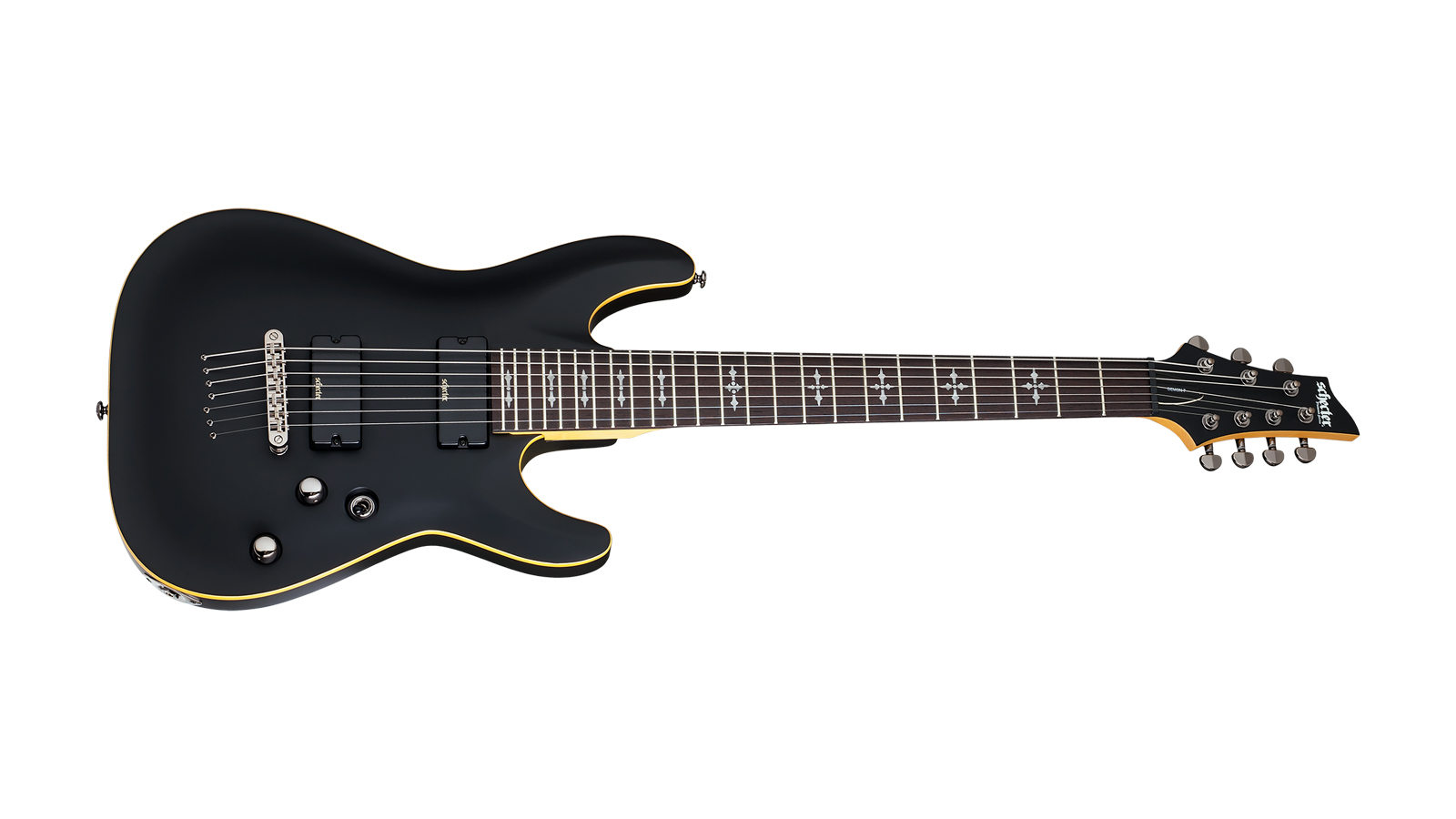
3. Schecter Demon-7
Our expert review:
Specifications
Reasons to buy
Reasons to avoid
If you’re searching for a no-nonsense metal guitar, then the Schecter Demon-7 might be just what you are looking for. You’ll be in good company as well, as Schecter guitars have been a mainstay for many artists such as Synyster Gates and Zacky Vengeance to Dan Donegan and Jerry Horton.
This beautifully simple guitar comes loaded with a set of Schecter Diamond Active HB-1055 humbuckers. These high-output pickups certainly impress, with plenty of low-end and a fair amount of clarity in the higher frequencies. In case this guitar wasn’t entirely metal enough for you, the wenge fretboard comes adorned with gothic cross inlays to complete the look. We must say the 24-fret maple neck feels very comfortable for a 7-string at this price point and would suit most 6-string players.
So, if you are in the market for a guitar that gets straight-to-the-point with no mod-cons that get in the way of you playing, then it’s worth seeking one of these guitars out.
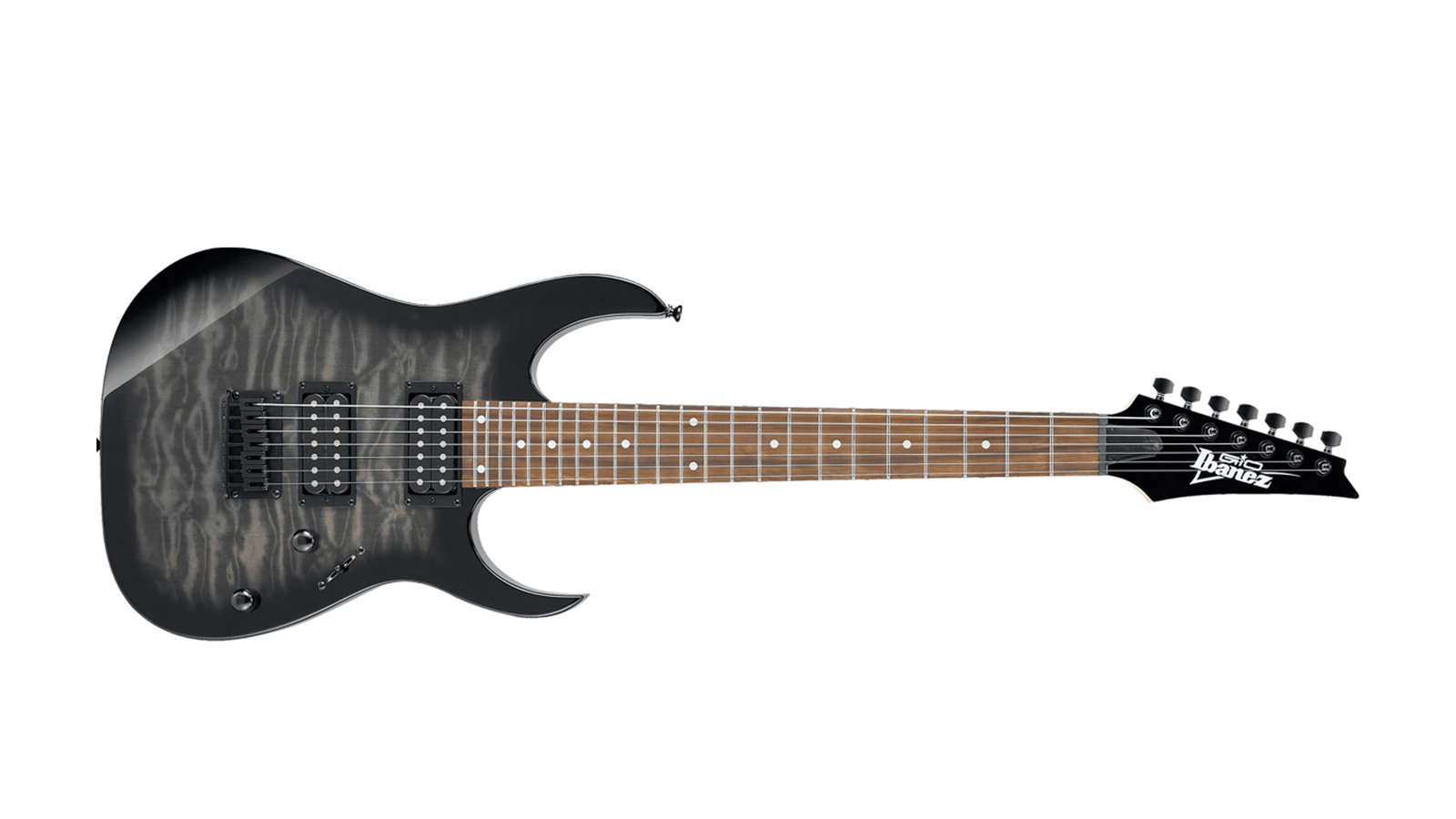
4. Ibanez Gio GRG7221QA
Our expert review:
Specifications
Reasons to buy
Reasons to avoid
So you’re thinking about getting a 7-string guitar, and you’re on a strict budget? Well, there are options. You could go for a Jackson DS22-7 Dinky, which is pretty sweet, has a much nicer fingerboard, and plays great, but then the Gio’s GRG7 neck profile and its quilted maple veneer and transparent finishes just about edge it.
7-string neophytes will find the neck an easy ride, and the F107 hard-tail is a tidy piece of engineering.
This is one of the best 7-string guitars for beginners and would be worthwhile modding in time. Switching out the pickups for something a little hotter would be a fun project. As it is, though, you’ll find plenty of chug for the money.
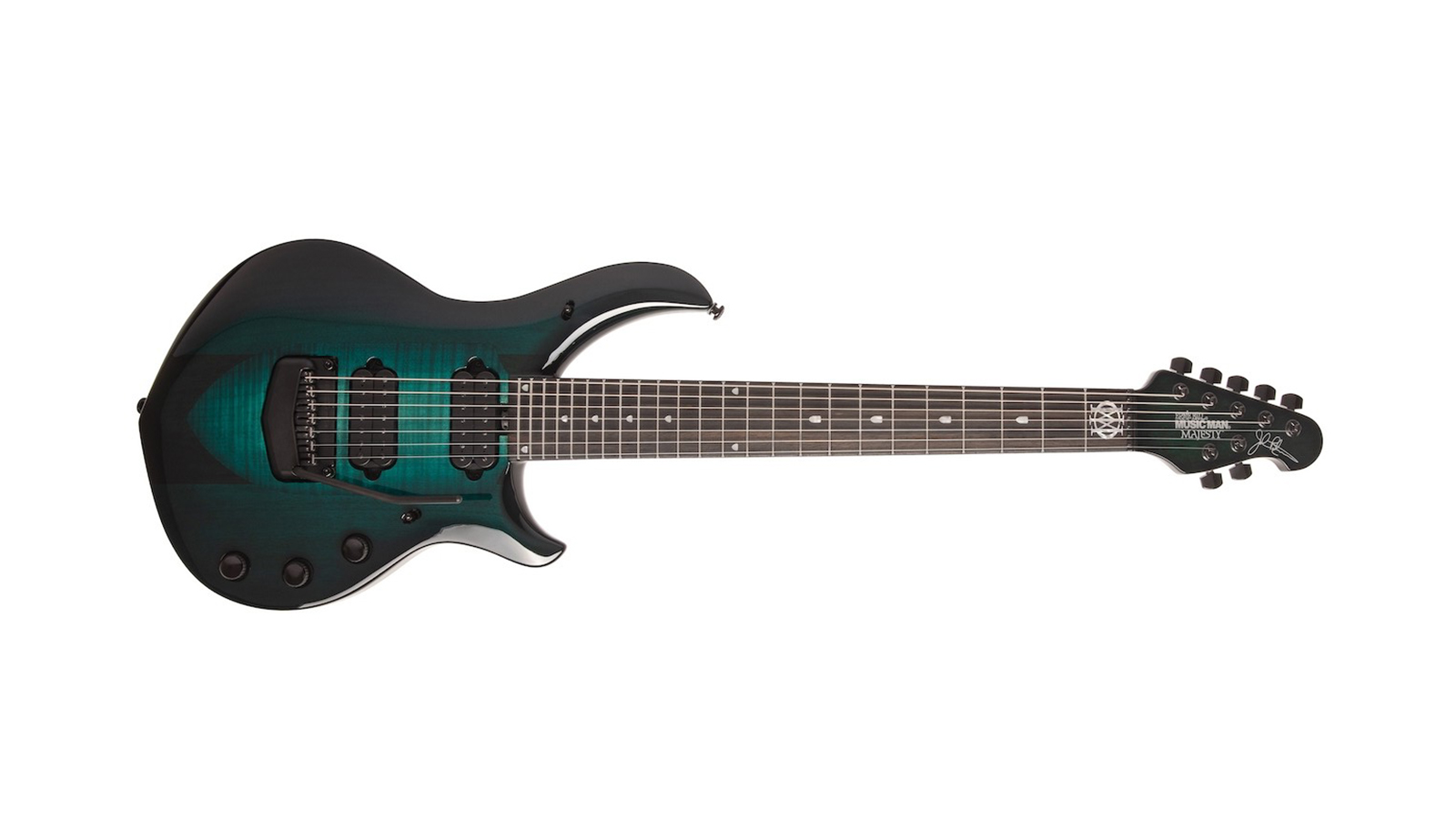
5. Ernie Ball Music Man John Petrucci Majesty
Our expert review:
Specifications
Reasons to buy
Reasons to avoid
OK, the one percent need only apply, but what a guitar: this may well be the acme of 7-string superstrat design. Where do you start? Well, the construction, fit and feel is incredible.
The DiMarzio Rainmaker humbuckers coupled with its byzantine switching system offer a cornucopia of tones, metal and otherwise, while the built-in adjustable boost will help your solos cut through the mix.
The Piezo on is like the guitar equivalent of having monogrammed slippers and smoking jacket. It’s just classy. But it’s not just for show, and allows Petrucci some on-the-fly acoustic tones.
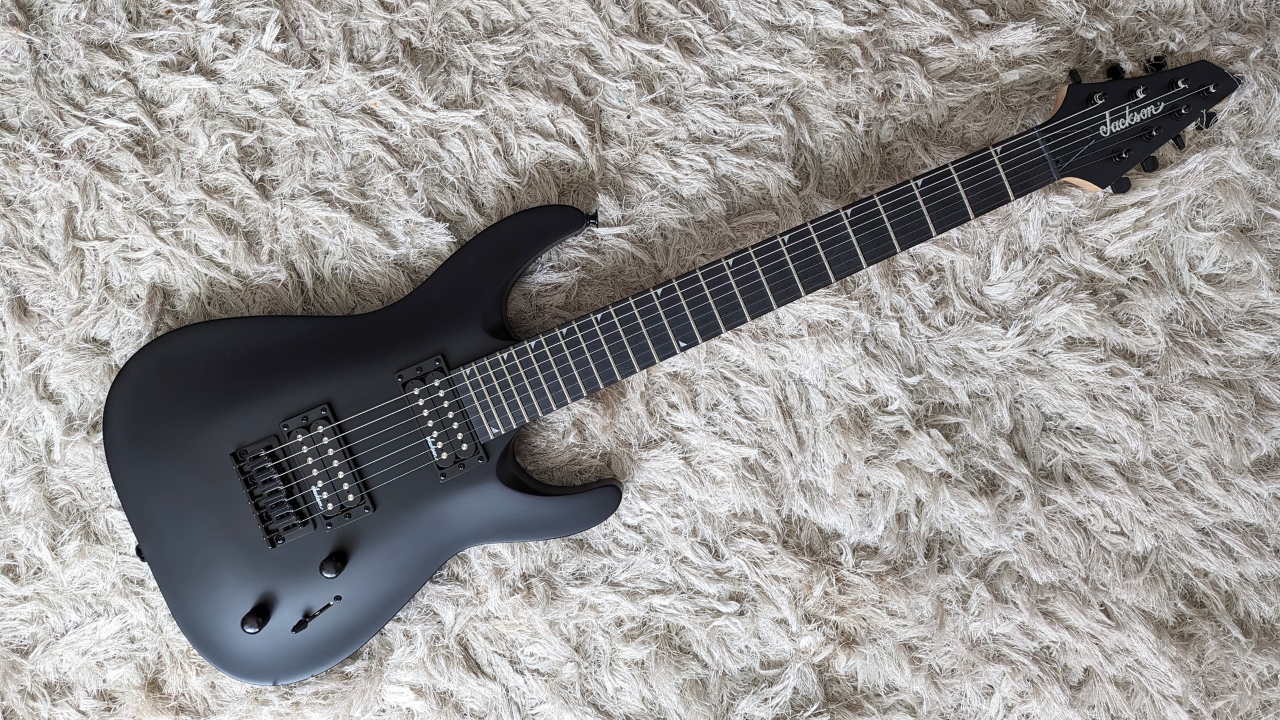
Specifications
Reasons to buy
Reasons to avoid
This entry-level Jackson might be a spartan instrument but as a gateway drug for the 7-string curious this is hard to beat. The jumbo frets reward a light touch while the Dinky’s body is always comfortable whether played seated or standing.
The JS22-7 would make a great fixer-upper – the most obvious mod would be a pickups upgrade. That said, the stock Jackson humbuckers deal well with thick distortion and won’t make a meal of your riffs.
The scale length helps keep that 7th string taut and a compound radius fretboard ensures you'll always have a comfortable playing experience. It held its tuning incredibly well when we tested and for the price, it's the perfect 7-string for first timers.
Read our full Jackson JS22-7 DKA Dinky HT review
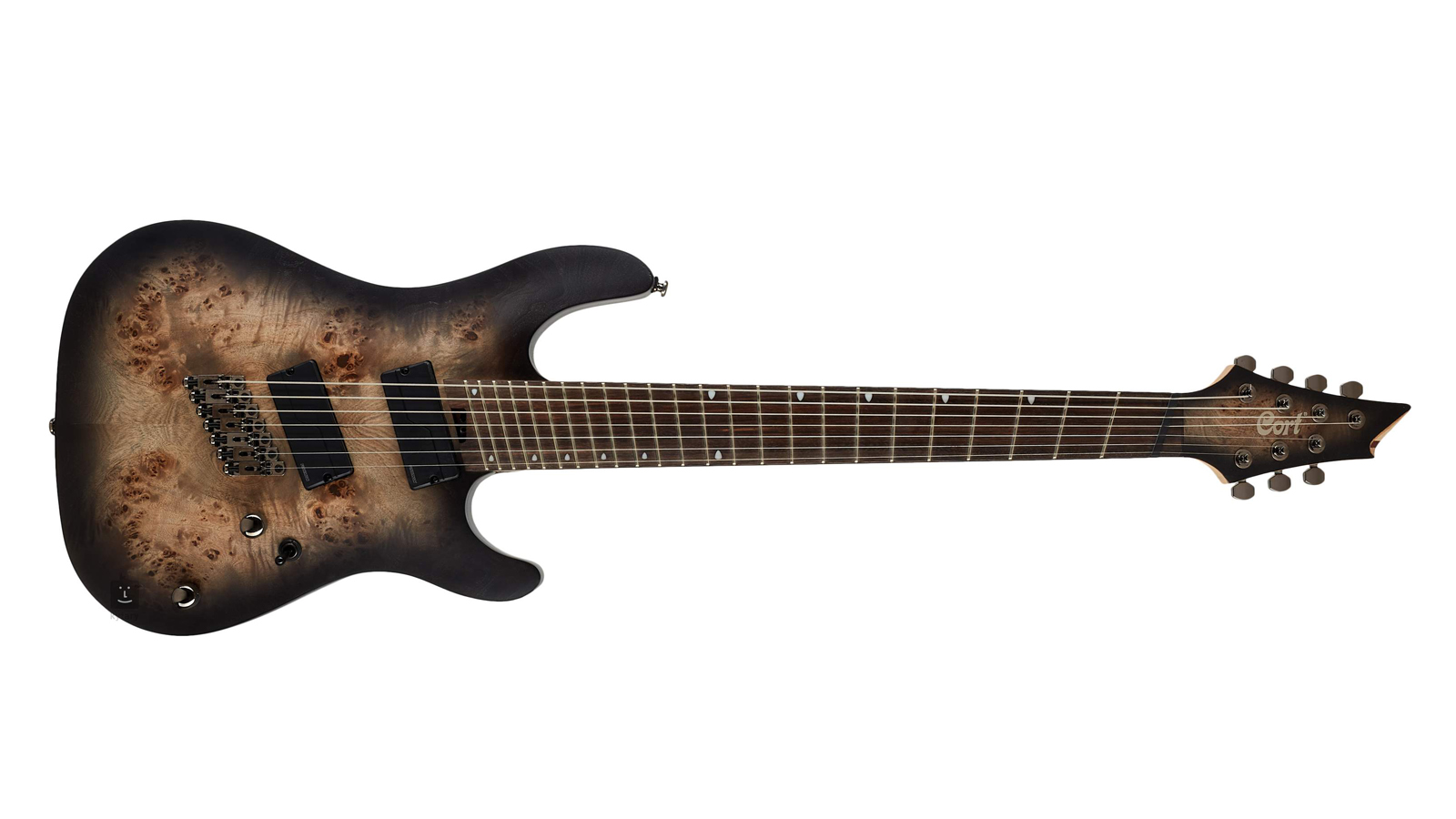
7. Cort KX507MS
Our expert review:
Specifications
Reasons to buy
Reasons to avoid
The individual bridge saddle design is not a feature exclusive to Cort but it’s nonetheless part of what makes the KX507MS such a good option for those looking for an accessibly-priced 7-string that places intonation at the core of its appeal.
This drive for perfect pitch starts at the string’s journey at the seven-individual saddles, arranged at an angle, and continues towards the nut across the fanned-fret fingerboard. This multi-scale idea is perfect for extended-range guitars, where you want a longer scale for the low B string to keep it tight for riffing while a Fender-esque 25.5” scale on the high E allows you to bend strings for leads.
It’s the best of both worlds, so long as both those worlds are populated by chug-hungry metalheads, for the pair of super-hot active Fishman Fluence Modern humbuckers are wound for the maximum destruction arising from high-gain and low-tunings. It’s fierce, but that’s the point, right? That said, you can activate coil-split, and take advantage of the two voices types that these amazing pickups have on offer, via the push/pull volume and tone knobs.
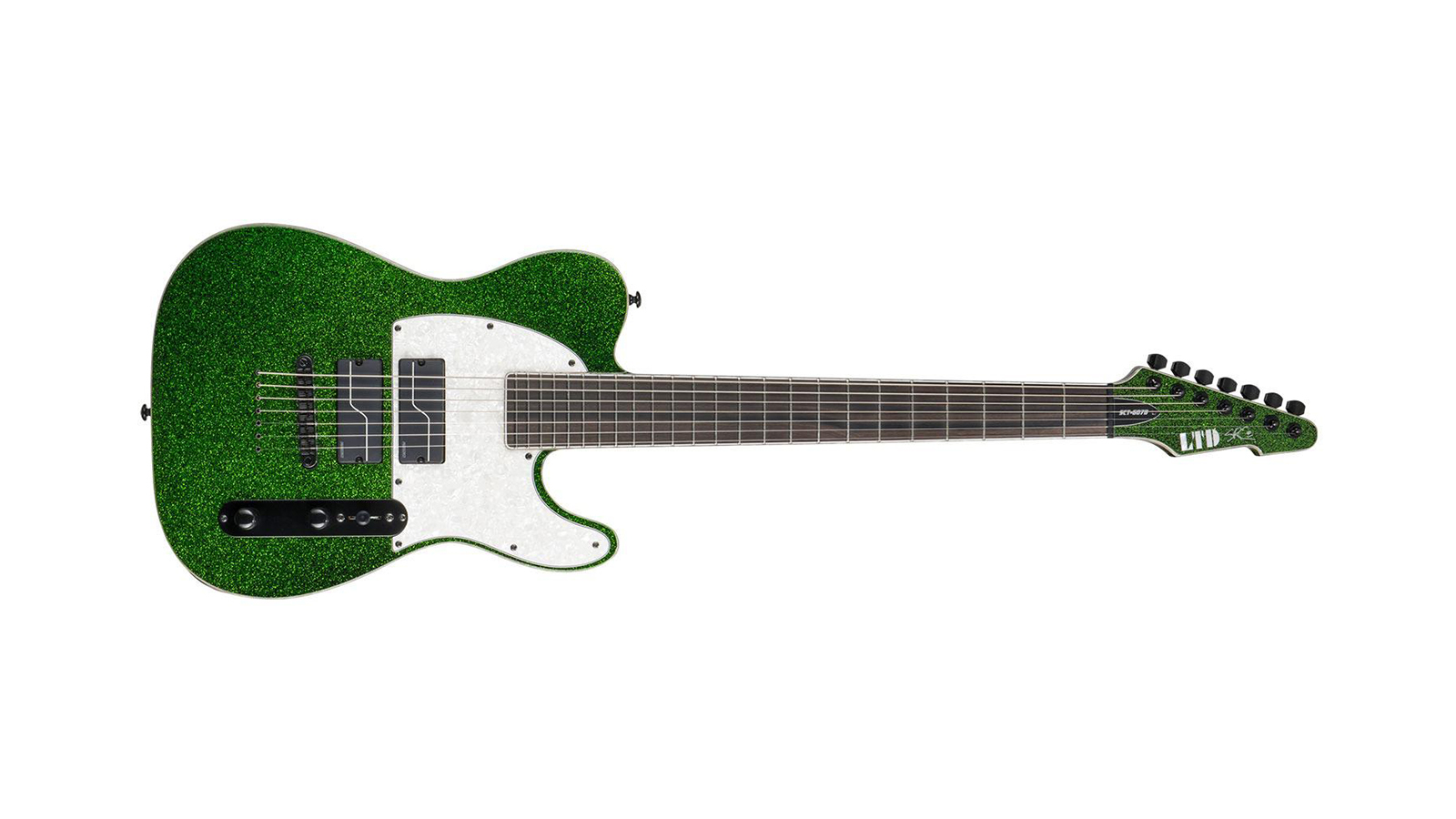
8. ESP LTD SCT-607B Stephen Carpenter Baritone
Our expert review:
Specifications
Reasons to buy
Reasons to avoid
We love the Green Sparkle finish and Tele vibe. But make no mistake: this, too, is geared towards metal, or at least situations when the gain is on high. The full baritone guitar scale is a beast but tuning this down a whole step or a step-and-a-half won’t throw it out of whack.
The Fishman humbuckers are active but have a push/pull feature to toggle between their “modern passive” and “modern active” voicings. A nine-volt battery is hidden in the back and easily changed. The through-neck construction is another positive; this will sustain for days.
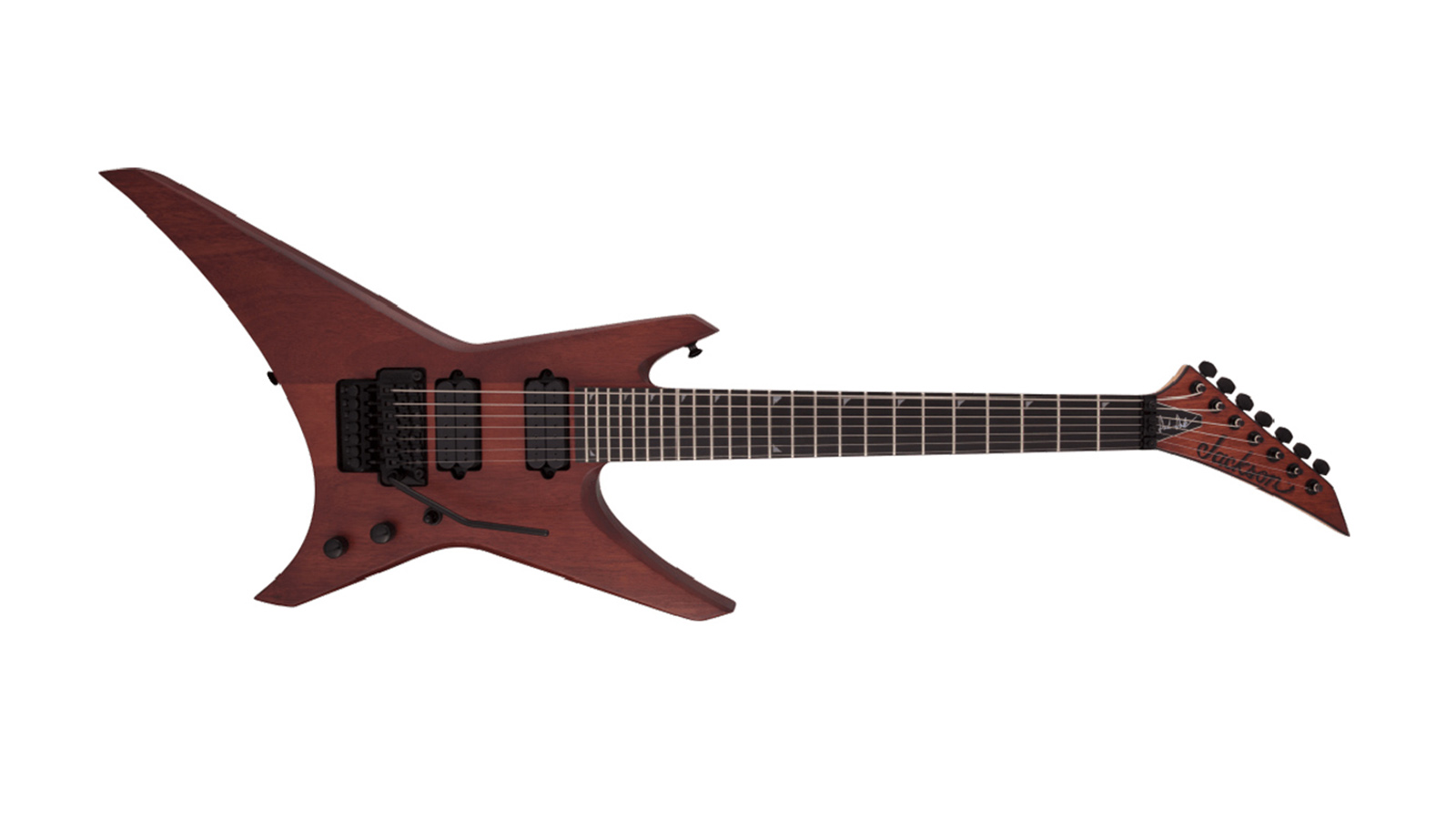
9. Jackson Pro Series Dave Davidson Signature Warrior WR7
Our expert review:
Specifications
Reasons to buy
Reasons to avoid
You could take someone’s eye out with Dave Davidson’s new signature 7-string, but maybe if you play death metal in a band named Revocation that is kind of the point. But seriously, the Warrior is one of Jackson’s most slept-on body shapes, and should be mentioned in the same conversation as the BC Rich Warlock or Jackson’s Rhoads asymmetric V bodies.
Here, Davidson has gone for a mahogany body and resisted the urge to overwhelm it with active pickups, preferring instead his signature Imperium humbuckers from DiMarzio. With a frequency output that emphasises the guitar’s midrange, they are pretty classically voiced, and offer a dynamic playing experience.
A Floyd Rose 1000 Series vibrato is on hand for saucing your lead playing with harmonic squeals and dive-bombs, and it’s a mighty fine unit.
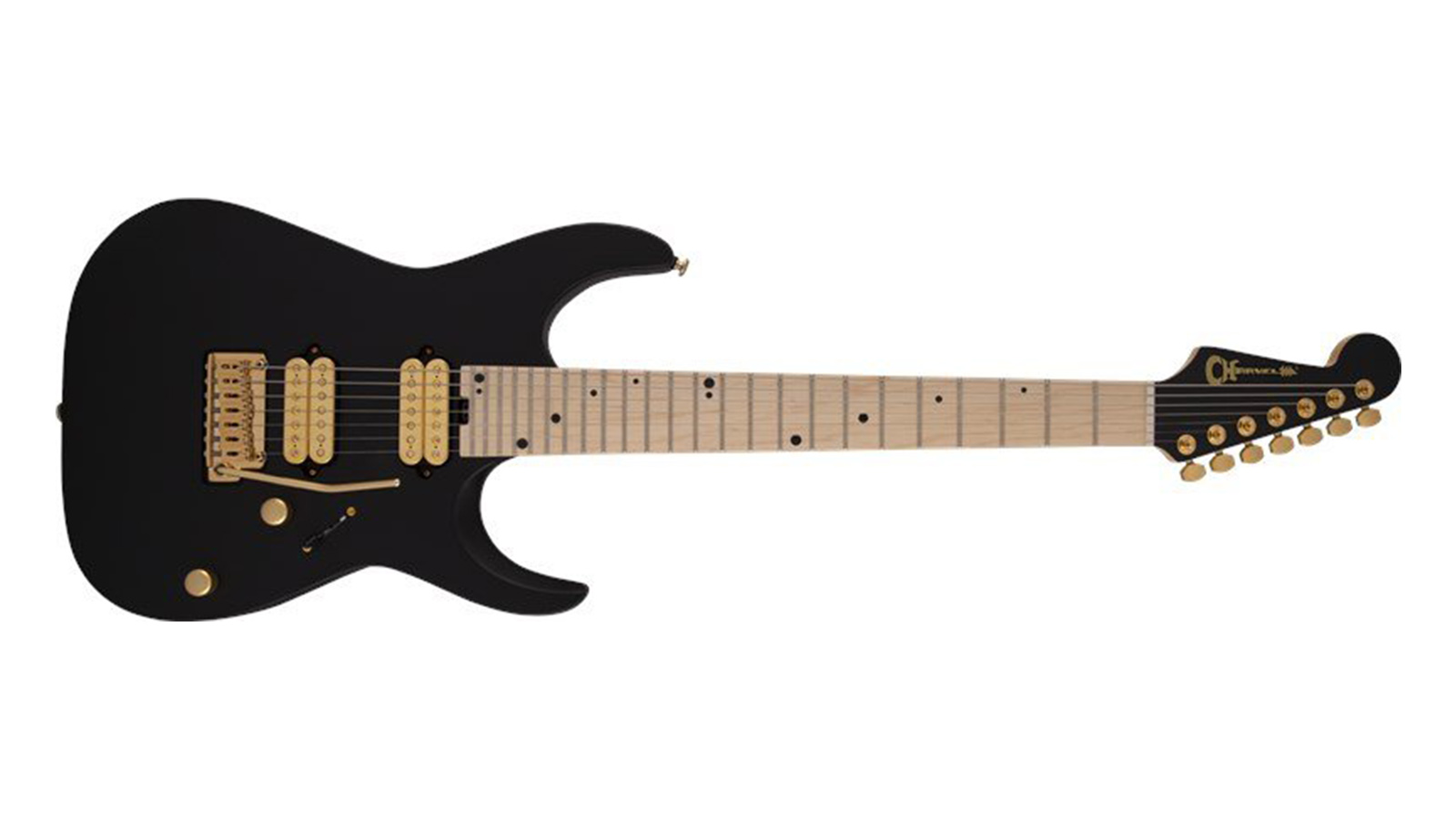
10. Charvel Vivaldi DK24 7 NOVA 7-string guitar
Our expert review:
Specifications
Reasons to buy
Reasons to avoid
Now available in a very tasteful Satin Black, (the original was finished in Satin Sage Green as chosen by Angel Vivaldi’s fans), the NOVA is pretty much everything you’d look for in a hot-rodded Super Strat.
When Charvel draws up plans for a new guitar with an artist, nothing is off the table. There are some really cool signature flourishes here. Note the tilt-back headstock – this is the only Charvel to have one, and it is to enhance consistency in string tension.
A set of locking tuners does the job nicely in keeping everything in order, while the Gotoh vibrato is super-stable. Little touches such as the rolled edges on the fretboard just make for a supremely playable instrument.
Elsewhere, the Nova has a Charvel-branded reverse Stratocaster headstock and a modified Jackson Dinky body. Exactly the sort of inventive, witty guitar design that Charvel made its name in.
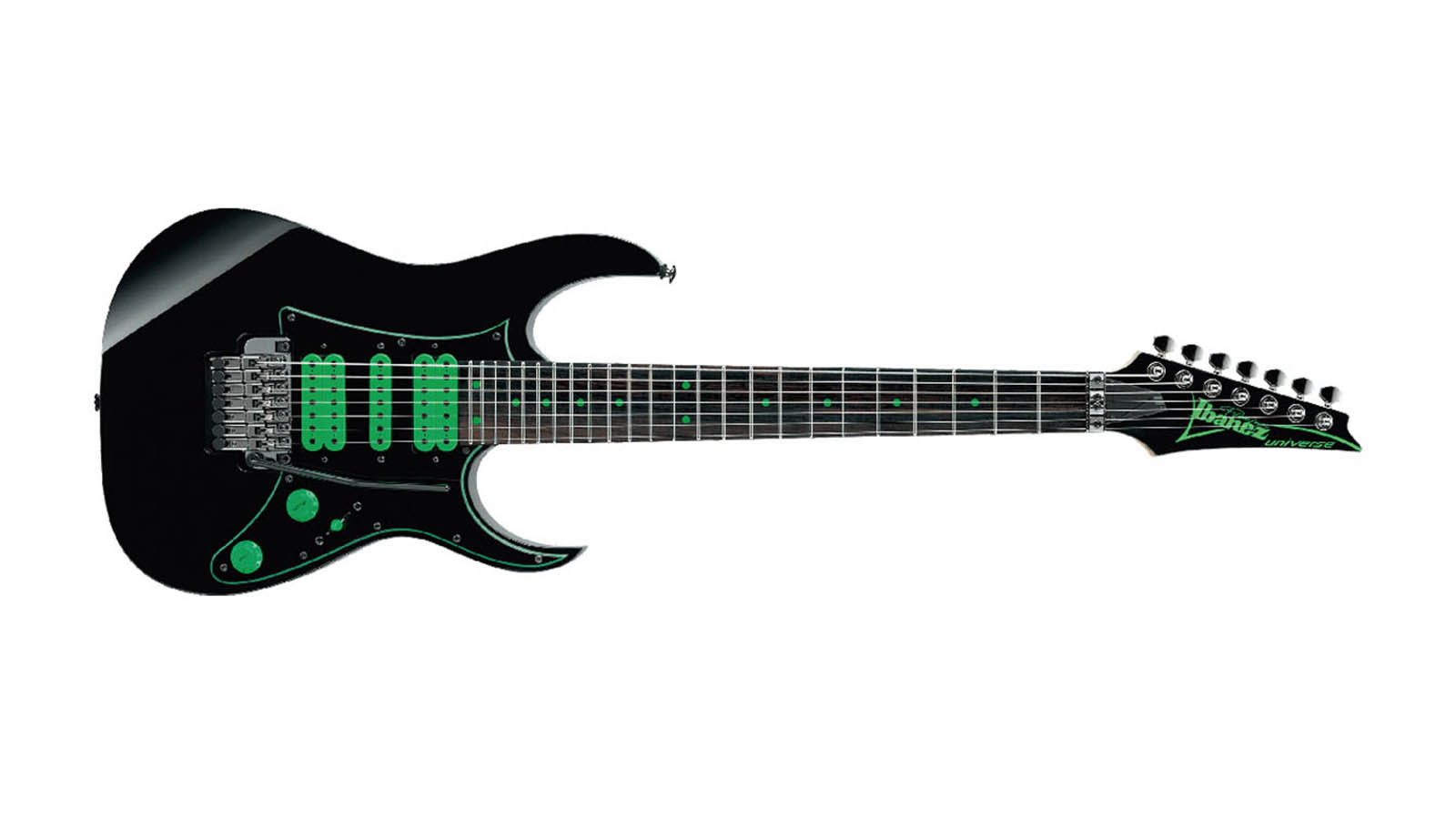
11. Ibanez Premium Steve Vai Universe UV70P
Our expert review:
Specifications
Reasons to buy
Reasons to avoid
The Universe was definitely the guitar that started the extended-range craze, even if it took a while to catch on. Developed with Steve Vai, it was launched in 1990 and would become a game changer, an avant-garde Super Strat – and yet now much of its appeal lies in its retro cache.
The HSH pickup configuration and five-way switching offers such a wide variety of tones. This reissue is a great option for those who might feel the 7-string’s evolution was perfected first time out. It has DiMarzio Blaze pickups, which are passive but are pretty darn hot – after all, Vai loves a lot of gain and bringing it to heel is a big part of his style. The Wizard-7 neck profile is flat and wide, a solid bedrock for exploring the panga panga fretboard. Panga panga? Also known as wenge, a rosewood substitute and performs similarly.
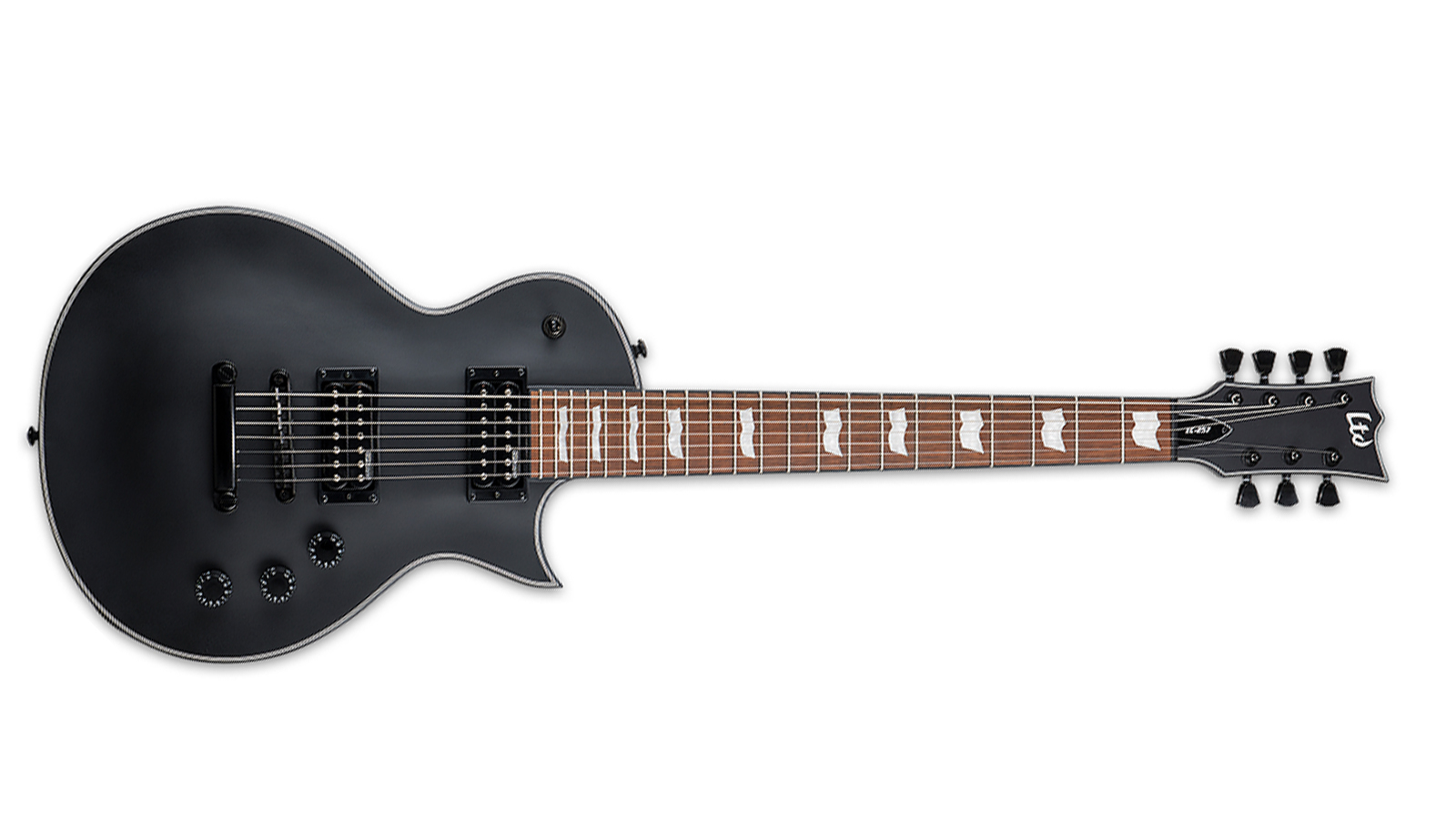
12. ESP LTD EC-257
Our expert review:
Specifications
Reasons to buy
Reasons to avoid
This is a reasonably priced 7-string guitar with some pretty cool features, finished off nicely with a traditional, old-school design. It’s fairly basic, but that will be ideal for some players. The pair of EMG-designed passive humbuckers are punchy and aggressive when you need them to be, yet dynamic. They’re also coil-tappable which makes it a surprisingly versatile guitar. With it having a set neck, you get plenty of sustain too which is great for lead work.
The tune-o-matic bridge and tailpiece does mean that dive-bombs are a no-go, but tuning stability and intonation are a walk in the park. The thin U neck profile is comfortable – like any 7-string neck, it takes a bit of getting used to, but it’s certainly not intrusive.
The singlecut design is classic and timeless, so if you need a great sounding and playing 7-string guitar but would rather stay away from the more modern styles, then the LTD EC-257 could be the one for you.
Best 7-string guitar: Buying advice

Choosing the best 7-string guitar for you
You can trust Guitar World
Modern 7-strings, as we know them today, largely stem from the Ibanez Steve Vai Universe models of the 1990s (though earlier 7-strings can be traced way back to the 1930s!). These guitars helped kickstart the whole thing, and 7-strings have been gaining in popularity ever since. As such, there are different models all with different specs, so it can be a bit daunting if you’re not sure what you’re looking for. We’ve come up with some buying advice to help you find the best 7-string guitar for you.
What pickups does my 7-string guitar need?
When looking for the best 7-string guitar for you, it’s worth checking out the pickups that come fitted, as these have the biggest impact on the tone you’re going to get. As 7-strings are popular within heavier music, most are equipped with high output pickups that break up sooner and sound great when paired with a nicely distorted amp or pedal.
You’ll find some of the best 7-string guitars feature active pickups. These have a built-in preamp (so require a power source – usually a 9v battery) and often have a higher output than passive pickups. They’re great for getting really high gain sounds, whilst retaining clarity and note definition, plus due to the nature of how they work, there’s less of a magnetic pull on the strings, so you get some great sustain.
The alternative is passive pickups. These don’t require any external power and are more traditional, though that doesn’t mean that they’re going to sound old school. There are some really good high output passive pickups, utilizing powerful magnets that can help deliver superb sounding distortion. Some describe passive pickups as having a little more character to them, and tend to be more dynamic.
7-string guitar scale length
Another key consideration on the journey to finding the best 7-string guitar is the scale length; that is, the distance between the nut and the bridge. This can determine how the guitar feels under your fingers, and also how it sounds.
The longer the scale length, the more tension there is on the string and conversely, the shorter the scale length, the less tension there is and more loose and floppy the string will feel. All the guitars in this guide have a minimum scale length of 25.5” – this helps keep that low B string nice and tight, both in terms of how it feels and how it sounds!
Standard tuning for a 7-string is B to E – so the same as a regular guitar, with an added low B at the bottom. You can tune them even lower – if you are, then it’s worth looking at the models with a longer scale length to prevent the bottom end losing clarity.

Playability
Having an extra string means the neck and nut are going to be a little wider than a normal 6-string electric guitar. This does take a bit of getting used to, but once you’ve played around with it for a while, it gradually feels more natural. Many 7-string guitars will have slim neck profiles to help you get your fingers around the wider neck, so if that’s a concern for you, then keep an eye on the shape of the neck.
Some might have contours on the back of the neck heel, or the front of the cutaways too, which can aid in getting your fingers to the highest frets of the treble strings. It depends what you find comfortable, but this could be something that benefits you when you’re taking a break from riffs, and shredding some solos further up the neck
Neck feel
If you’re making the jump from 6-string to 7-string, you’re going to notice a difference in how the neck fits in your hand, which will affect playability. Like with anything, you’ll get used to it, but one thing to look out for when on the hunt for the best 7-string guitar is the neck profile. A thin or narrower neck might help make the transition a little easier.
How important are looks?
Ok, so the look doesn’t affect how it sounds or feels, but it’s still important if you’re looking for the best 7-string guitar. Some of them are more old-school in their design, which can tick boxes for some players. If you’re playing in a band and you want to stand out, then there are some pretty outlandish 7-string models to choose from too (the Jackson Dave Davidson springs to mind). If you’re mostly going to be playing this at home, and you’re not too bothered about looks, then you can concentrate on all the other specs and remain unhindered when choosing your 7-string guitar.
Should you consider signature models?
There are quite a few signature 7-string guitars. These tend to be for metal players, but just because you’re getting the signature guitar of Mark Holcombe, for example, doesn’t mean you can only play metal on it. Many signature 7-strings are simply guitars that have had a few tweaks and mods to make them slightly different to regular production models.
Related buyer's guides
- Blow the budget with the best high-end electric guitars
- Freshen up your axe with the best electric guitar strings
- 7-strings not enough? These are the best 8-string guitars you can buy
- The best amps for metal from Marshall, Blackstar and more
- Boost your tone with the best pickups for metal
- Looking for a lefty? Here is our pick of the best left-handed guitars
All the latest guitar news, interviews, lessons, reviews, deals and more, direct to your inbox!
Jonathan Horsley has been writing about guitars since 2005, playing them since 1990, and regularly contributes to publications including Guitar World, MusicRadar and Total Guitar. He uses Jazz III nylon picks, 10s during the week, 9s at the weekend, and shamefully still struggles with rhythm figure one of Van Halen’s Panama.

